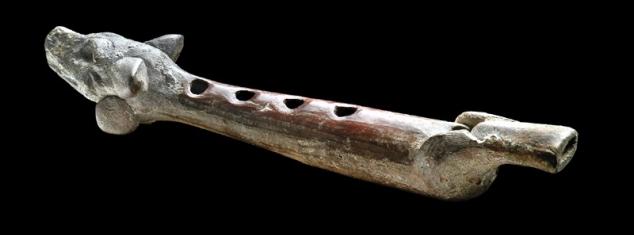
Chicago's Field Museum isn't just a science museum. It's also a research center, especially for archaeologists and anthropologists who come to the museum to make use of its extensive collections of artifacts — only a tiny fraction of which is on public display at any given time. Unfortunately, the museum is currently up to its neck in debt, and part of the current administrators' plan to deal with that problem is to restructure the research department and cut back on curators and staffing there.It's hard to understand why this has the archaeology community so on edge unless you really understand what the Field Museum has in those vast Indiana-Jones-inspiring storage collections. Here's Michael Smith, an archaeologist who studies the ancient Aztecs, explaining why the Field Museum is so important to his work and that of his colleagues.
The photo above shows an Aztec flute in the museum. I have excavated many small fragments of these objects in Aztec domestic middens, but never an entire example. When one just has the animal's ear, or a segment with a hole, or a fragment of the mouthpiece, it is hard to figure out just what these are pieces of. It is through study of the whole flutes in the Field Museum or other museums that I learned to interpret the tiny fragments of musical instruments, and of many other unusual items, from my excavations. Or consider our knowledge of Aztec music. Scholars such as Adje Both have reconstructed aspects of Aztec music by studying flutes like this and by playing them (and recording the tones and doing analyses of the sound diagrams). Museums are the only places with the resources for such research, and the Field Museum is one of the most important in the U.S. and the world.

No comments:
Post a Comment